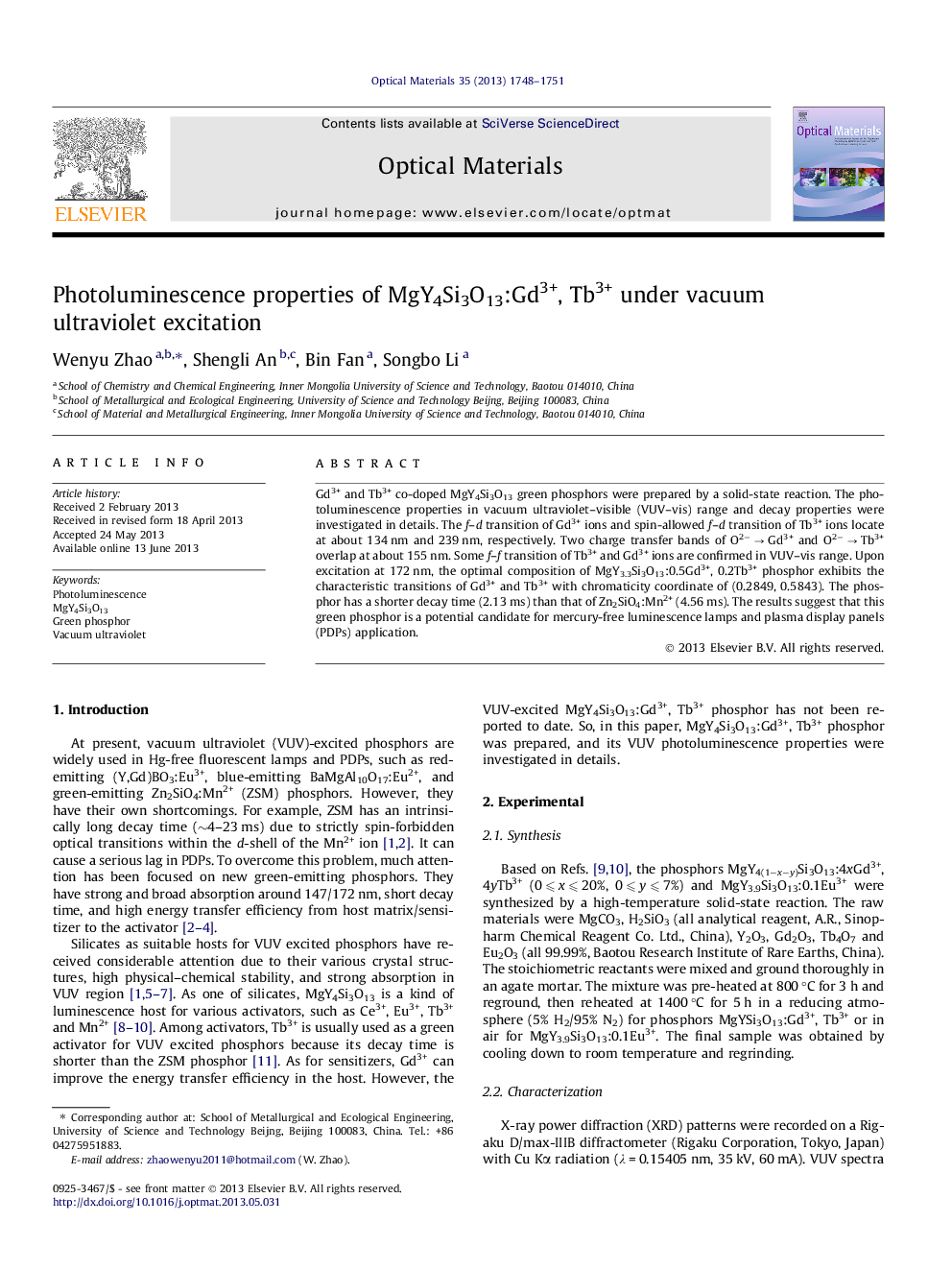| Article ID | Journal | Published Year | Pages | File Type |
|---|---|---|---|---|
| 1494757 | Optical Materials | 2013 | 4 Pages |
•MgY4Si3O13:Gd3+, Tb3+ is considered as a potential green VUV excited phosphor.•O2− → Gd3+ and O2− → Tb3+charge transfer bands are overlapped at 155 nm.•The f–d transition of Gd3+ and Tb3+ ions are assigned and corroborated.•Compared to commercially ZSM phosphor, the phosphor has shorter decay time.•This phosphor can be applied in mercury-free luminescence lamps and PDPs.
Gd3+ and Tb3+ co-doped MgY4Si3O13 green phosphors were prepared by a solid-state reaction. The photoluminescence properties in vacuum ultraviolet–visible (VUV–vis) range and decay properties were investigated in details. The f–d transition of Gd3+ ions and spin-allowed f–d transition of Tb3+ ions locate at about 134 nm and 239 nm, respectively. Two charge transfer bands of O2− → Gd3+ and O2− → Tb3+ overlap at about 155 nm. Some f–f transition of Tb3+ and Gd3+ ions are confirmed in VUV–vis range. Upon excitation at 172 nm, the optimal composition of MgY3.3Si3O13:0.5Gd3+, 0.2Tb3+ phosphor exhibits the characteristic transitions of Gd3+ and Tb3+ with chromaticity coordinate of (0.2849, 0.5843). The phosphor has a shorter decay time (2.13 ms) than that of Zn2SiO4:Mn2+ (4.56 ms). The results suggest that this green phosphor is a potential candidate for mercury-free luminescence lamps and plasma display panels (PDPs) application.
